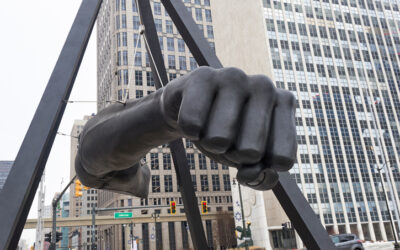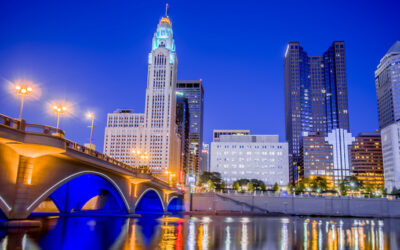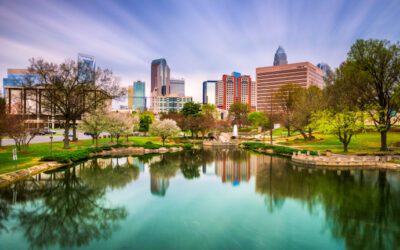Fans of “Sex and the City” remember when Miranda scoffed at the idea of moving to Brooklyn, telling her browbeaten hubby Steve, “We’re not moving to Brooklyn. I’m a Manhattan girl. I don’t like anything not Manhattan.”
Well, that was so 2004.
What’s also outdated is the notion that Brooklyn is a more affordable place to live than Manhattan. A headline in the Guardian dubbed the borough “America’s most unaffordable place to buy a home,” and according to a recent report, the average Brooklyn resident must now spend 124% of their wages to meet the monthly payments on a median-priced home – the highest figure in the country.
In addition to the overpriced real estate, much to the chagrin of natives and longtime dwellers, Brooklyn has also become New York City’s hippest and fasted growing borough. According to data from the City of New York, Brooklyn led in population growth over the last five years, followed by the Bronx, Queens, Manhattan and Staten Island.
Even six out of the ten neighborhoods listed on Streeteasy’s NYC’s Hottest Neighborhoods in 2017 are in Brooklyn. With some overlap, we’ve selected our five favorite areas in the county of Kings.
1. Fort Greene
Have you seen our London Planetrees around the park? You may have missed these trees distinctive by their camouflage bark. Grab a brochure and take a walk on our #TreeTrail to learn more about the trees of Fort Greene Park. pic.twitter.com/o0KUWR6GJa
— Fort Greene Park (@fortgreenepark) November 17, 2017
Ranking number two on Streeteasy’s hot list, Fort Greene is a stunner. Anchored by Fort Greene Park and Brooklyn Academy of Music, this is brownstone Brooklyn at its finest. Actors, musicians and other creative types are fond of the bohemian vibe.
Vibrant eateries serving diverse cuisine line Dekalb Avenue (although the beloved South African restaurant, Madiba, recently closed after 19 years in business), Myrtle Avenue and strips of Fulton Street and Lafayette Avenue near BAM. Native Brooklynite Spike Lee no longer lives in the borough, but he still has a strong presence. The outspoken filmmaker annually hosts birthday block parties for dearly departed pop legends Prince and Michael Jackson, and his 40 Acres & a Mule Filmworks – adorned with colorful poster art from his first film, She’s Gotta Have It—is located in the heart of Fort Greene next to the popular sports bar, Mullanes.
2. Park Slope
Park Slope Historic District. Brooklyn, New York. – Looking absolutely perfect 🍂 🍁🍂 🍁🍂 🍁🍂 🍁🍂 🍁🍂 🍁🍂 🍁🍂 🍁 pic.twitter.com/jza6s2asIQ
— clingmusic 🎵🎵 (@clingmusic) February 20, 2018
Similar to Brooklyn Heights, Park Slope doesn’t change much with the times, which is refreshing. While new development has descended on Fourth Avenue, the Slope is predominantly a stroller-and-LGBTQ-friendly area where people are more likely to know their neighbors.
And that sort of Cheers-like community may be less attractive to single millennials, who seem to prefer rapidly gentrifying areas like Bed-Stuy and Bushwick. Seventh and Fifth Avenues are the main commercial drags, and many of the boutiques and restaurants are still independently owned. Spa ladies love d’mai Urban Spa and Beacon’s Closet is a hipster fixture for buying, selling and trading vintage and gently used contemporary clothing.
Foodie crowd pleasers include Bogota Latin Bistro, Top Chef alum Dale Talde’s Talde and al di la Trattoria. Signature landmarks include the 526-acre Prospect Park with its seasonal LeFrak Center at Lakeside ice-and-rolling skating rink, and Grand Army Plaza, with its iconic Arch and popular Saturday farmer’s market.
3. Brooklyn Heights
If you see the #movie "The Post," the exterior used for Ben Bradlee's Georgetown townhouse (daughter has lemonade stand) is light blue building in my photo on Willow St. in #Brooklyn Heights just south of Truman Capote's house.#ThePost #cinema #FilmTwitter #film #filmlocations pic.twitter.com/6XU59BF5AM
— Robert Gibbons (@robert__gibbons) February 8, 2018
Stately brownstones and doorman apartment buildings typify this historic nabe. Montague Street has a quaint strip of shops and eateries and leads to the pedestrian-and-bike-friendly Brooklyn Bridge Promenade – a perennial highlight for its breathtaking views of the lower Manhattan skyline. Under the Brooklyn Bridge, tourists and locals alike line up for the coveted coal-fired brick oven pizza at Grimaldi’s.
Although Brooklyn Heights has witnessed less new development than neighboring Dumbo, a welcome addition is the 85-acre Brooklyn Bridge Park, which opened in 2010. Home to the new luxe boutique hotel, 1 Hotel Brooklyn Bridge, the park spans over 1.3 miles of Brooklyn’s waterfront from the Columbia Heights waterfront district to the Manhattan Bridge in Dumbo. Spread out over several piers, fitness buffs and sun-seekers enjoy jogging, roller skating, playing tennis, basketball, volleyball and picnicking on the grass.
4. Dumbo
Dumbo, Brooklyn Bridge Park. New York. pic.twitter.com/w1vPr0rmLo
— OraliaSoto (@OraliaSotoRoman) February 14, 2018
If Brooklyn has an “it” neighborhood, then Dumbo—an acronym for Down Under the Manhattan Bridge Overpass—is it. Not that long ago the area was sketchy and barely inhabited. Now the cobble-stoned streets navigate through one of the most sought after and visited spots in Brooklyn.
Tech startups and indie retailers have set up shop in former industrial buildings. The aforementioned Brooklyn Bridge Park is on the border, and its charming Jane’s Carousel attracts kids of all ages. Known for its vintage sellers and artisanal food vendors like addictive Dough donuts, Brooklyn Flea is a draw on Sundays from April through October. For more sweets and caffeinated treats, Jacques Torres Chocolate, One Girl Cookies and Brooklyn Roasting Company are favorites. For upscale brunch or date night with water views, check out newcomer, Sugarcane Raw Bar Grill, a globally inspired small plates restaurant with three kitchens. To be entertained, check out St. Ann’s Warehouse for avant-garde music and theater performances in a converted 19th century tobacco warehouse, and Powerhouse Arena is a unique art bookstore, gallery and event space.
5. Cobble Hill
Brooklyn’s Esteemed Sahadi’s Will Open a Second Location https://t.co/rJW31VAozK via @grubstreet pic.twitter.com/mkU8SLToCG
— Jerry Bauer (@HClean101) February 8, 2018
This compact neighborhood with a mix of tony brownstones, single-family homes and new apartment developments has a small town feel. Bordered by Brooklyn Heights to the north, Boerum Hill to the east, Carroll Gardens to the south and the Columbia Street Waterfront to the west, Cobble Hill attracts families, young professionals and celebrity residents like Ethan Hawke, Michelle Williams and Kerri Russell.
Court Street, the main artery, inhabits casual bars and eclectic restaurants, as well as the borough’s first Trader Joe’s, housed in a former bank that was erected on a landmark from the Battle of Brooklyn. Although it has lost some of its shine as Brooklyn’s “restaurant row,” Smith Street (which divides Boerum Hill) still boasts trendy boutiques and hip eateries, including the bustling French bistro Bar Tabac.
Historically a culturally diverse neighborhood, despite obvious gentrification you can still find authentic Middle Eastern specialty food shops and grocers along Atlantic Avenue – like mainstays Damascus Bread & Pastry Shop and Sahadi’s, a Brooklyn tradition since 1948.


